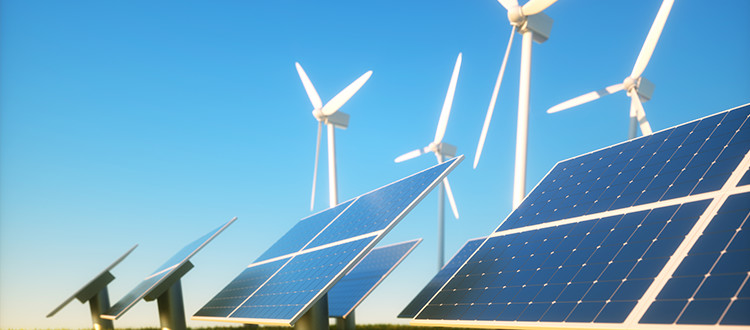Sustainable and Beautiful
Making a Sustainable World is Beautiful
The beauty of a more sustainable world isn’t just the elaborate and elegant ways of getting the energy we need to power our homes and businesses – it’s also the good you’re doing for the world around you. Protecting the environment is more fun when there is something pretty to see, but keeping the payoff, which is a healthy planet, front and center, is also important. Protecting the the planet and the beauty of nature is everyone’s responsibility, and if you’re making the switch to clean wind energy, you’re making this pretty planet even nicer.
Solar Farms
Imagine an expanse of shiny black material, glittering in the sun, and soaking up the rays of the sun to convert to usable electricity. Solar panels have come a long way from the badly-reputed eyesores of the 1980s. Even then, though, solar panels were reducing users’ reliance on the traditional electric grid. Solar panels are lighter and thinner than they were, and can be found on a variety of electronics from generators to cell phone chargers. Solar farms are strategically placed in deserts, and can stretch for miles. The largest one as of 2017 is the Solar Farm in Kamuthi, Tamil Nadu, India, followed by the Topaz Solar Farm in Southern California.
Wind Farms
Sweeping fields of white windmill-shaped structures against the setting sun is something that everyone loves to see. The beautiful wind farms of the world inspire graceful and memorable pictures that capture even the dullest and most uninspired imaginations. Though beautiful, wind farms do come with some ecological concerns, primarily centered around the health of avian species in the area. In response to this, wind turbine manufacturers have built wind turbines that spin out of the way of migrating birds, making the planet healthier and the air safer.
Tiny Homes
A recent eco-friendly trend among those who are willing and able to go to great lengths to help protect the environment is tiny homes. Tiny homes, as much as the name would suggest, are living spaces that are scaled down to less than 1000 square feet, with most of them less than 800 square feet. Tiny houses are almost always a single, multi-purpose room with a loft for the occupants to sleep. Tiny houses are almost never part of the traditional electric grid, usually relying solely on solar or wind power to make the home habitable. Tiny homes are sourced from renewable materials, and usually cost between $90,000 and $200,000. If you’ve got more time and creativity, another renewable and sustainable trend is building a living space with shipping container. Shipping containers can be purchased for around $2,000, but the costs of turning the inside into a livable space vary from city to city. If you’re someone who thinks outside of the box, a shipping container home could be for you!
Organic Farms
It’s important not to ignore all of the ways that we leave our mark on the planet. Though we rarely think about it, the way that we eat has an impact on the environment. When you go to the grocery store, try to stick to pesticide-free organic foods whenever possible. Also, visit your local farmer’s markets for fruits and vegetables. Local farmers are usually closer to the farmer’s market, and consume less fuel getting food from the farm to you.

